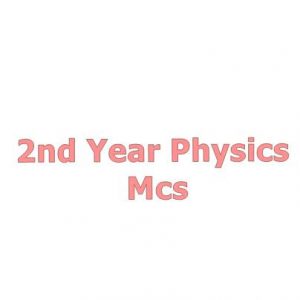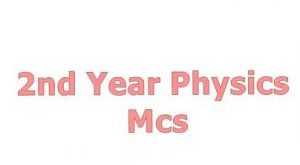After studying electricity in motion, the Physics 2nd Year Chapter 14 Electromagnetism MCQs with Answers is about the study of magnetic effect. The behavior of magnetic forces is discussed in detail. Here we will study the behavior of an electron when it is passed through a magnetic field. An important application to check the direction of the magnetic field is studied called Fleming’s Left-Hand Rule. The right-hand palm rule is also studied that is used to see the direction of the field, force, and current. There is a term Magnetic flux that is very important. There are different devices used to check the magnetic field. The galvanometer is one of them. Ampere’s law has a very big effect in Magnetic fields. So, this is a brief summary of Electromagnetism. If you are looking for the important MCQs for this chapter to prepare for the Entry test, then scroll down to get them.
Physics 2nd Year Chapter 14 Electromagnetism MCQs with Answers

Two parallel wires carrying currents in the opposite directions_______.
When a particle of charge q and mass m enters a uniform magnetic field B moving with a velocity v perpendicular to the direction for the field, it describes a circular path of radius_______.
A long solenoid carrying a current produces a magnetic field B along its axis. If the current is doubled and the number of turns per cm is halved, the new valve of the magnetic field is:
instrument, which can measure potential without drawing any current, is_______.
A proton is moving northward in a magnetic field directed vertically upward. The electron will be deflected.
When the coil of the galvanometer is in equilibrium, then the deflecting couple is:
Which one of the following material is most suitable for making core of an electromagnet?
The charged particle enters the uniform magnetic field in such a way that its initial velocity is not perpendicular to the field, the orbit will be_______.
An electron is moving north in a region where the magnetic field is south. The magnetic force exerted on the electron is:
A solenoid is 3.0cm long and has a radius of 0.50cm. It is wrapped with 500 turns of wire carrying a current of 2.0A. The magnetic field at the center of the solenoid is:
Your Result:
Sorry, no results found.
Please repeat the quiz and try different answer combinations.

 Online Exams Tests Preparation
Online Exams Tests Preparation


